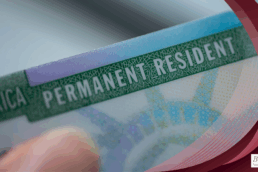What is Labor Certification and PERM?
The Immigration and Nationality Act §212(a)(5)(A) requires individual labor certification by the U.S. Department of Labor before a foreign national enters the U.S. to perform skilled or unskilled labor. The labor certification reports to the Attorney General that there are not sufficient U.S. workers available for the proposed employment, and that the foreign national’s employment will not adversely affect wages of similarly-situated U.S. workers.
PERM (Program Electronic Review Management) was implemented by the DOL in 2005 and is now the main procedure by which labor certification is done. Initially, it involves a U.S. employer obtaining a Prevailing Wage Determination from the applicable State Workforce Agency (SWA) and conducting recruitment for the open position. If there are no able, qualified, and willing U.S. workers to apply for the position, the employer will complete and submit (online or by mail) detailed information about the employer and the prospective position. From this point, the DOL will either certify the employer’s application or select it for auditing.
What is Special Recruitment?
Under PERM, Special rules apply for teaching faculty at higher-education institutions (college, university, medical school). Special Recruitment (formerly “Special Handling”) is a method under PERM for foreign nationals hired as teachers, professors, or prospective employees with at least some teaching duties. Under Special Recruitment, the employer need not demonstrate that there are no qualified U.S. workers to perform the given job duties, but rather that the foreign national is the best qualified for the position.
Advantages of Special Recruitment under PERM:
- in most jurisdictions, Special Recruitment labor certification process can be completed in 45-60 days (not including time added due to audits);
- It may be possible for schools to bypass obtaining H-1B and O-1 nonimmigrant visas for their foreign hires;
- Qualifying institutions may file a basic labor certification application but use the recruiting and selections processes provided under the Special Recruitment rules.
Special Recruitment Procedures
Special Recruitment is a method by which a foreign teacher or professor can seek employment-sponsored permanent immigration through a U.S. college or university. The following are the necessary steps:
Step 1: Special Recruitment
The employer must complete and file Form ETA 9089—Labor Certification Application—within 18 months after the date the alien is selected for employment
The employer must agree to pay 100% of the determined “prevailing wage” for the position once the alien secures permanent residency
The employer must provide extensive documentation that the alien was recruited under normal PERM procedures or under a competitive recruitment process. That documentation includes:
-
A signed, detailed statement discussing the recruitment efforts of the institution, the total number of applicants, and specific reasons why the alien was found to be more qualified than competing U.S. citizen applicants;
-
A final report of the institution recommending that the alien be hired following the selection process;
-
A copy of an advertisement placed in at least one professional journal, stating the title of the position and the duties entailed;
-
Evidence of other recruitment sources utilized by the institution; and
-
A written statement attesting to the alien’s educational and professional qualifications and achievements.
Step 2: The Green Card Petition
-
After the DOL issues the labor certification, the employer can then file a green card petition for permanent residency (I-140) on behalf of the alien.
-
USCIS will review the petition to ensure that the foreign applicant qualifies for permanent resident status.
-
Once the I-140 petition is approved by USCIS, the alien is eligible for a green card, and can begin the process to “adjust status” to that as lawful permanent resident if a visa number is available. This is the allotment of immigrant visas available, categorized by visa type and country of origin. Visa numbers are posted monthly by the Department of State in the Visa Bulletin.
Step 3: Adjustment of Status or Visa Processing
-
If a visa number is immediately available, the alien (and his or her dependants) can apply for permanent residency through the process of Adjustment of Status.
-
This stage will involve forms preparation, fingerprinting, and medical examinations by a designated immigration physician.
-
When the AOS application is approved, the alien’s temporary status will be “adjusted” to that of permanent resident.
Page Summary: A permanent labor certification issued by the Department of Labor (DOL) allows an employer to hire a foreign worker to work permanently in the United States.
Related Posts
October 7, 2025
DHS Plans Major Updates to Employment-Based Green Card Rules
September 25, 2025
What Is the Trump Gold Card? Requirements and Details
Ready to have Berardi on your side?
Whether you’re a business looking to hire or a professional hoping to relocate, immigration law can be complicated. But you don’t have to do it alone. Put our experience to work for you.


